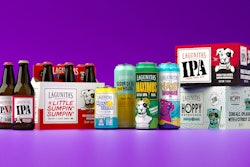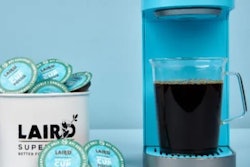If true, it contradicts the brand’s claim, arched top-central on the label, that the product is “ALL NATURAL.” As of this writing, the Defendants—the Simply Orange Company and its parent, the Coca-Cola Company—have not made a public response, nor has there been any announced rulings by the Southern District of New York Court. This article does not take a position as to the merits of the lawsuit. The position taken herein is that the lawsuit should be of interest to all companies seeking to leverage packaging as a marketing tool.
Communication is one of the functions of packaging (along with containment, protection, convenience, and utility). Communications can be implicit in utilizing structural elements, such as material, shape, and size. Communications can also be implicit in utilizing graphics elements, such as brand name, colors, depictions, and fonts. Communications, however, become explicit with the use of text. The packaging’s written words, just like spoken words, can be evaluated for their truthfulness.
The Federal Trade Commission Act empowers the Federal Trade Commission (FTC) to regulate what’s collectively known as truth-in-advertising. The FTC operates under a sweeping mandate as to medium, whether print, electronic, internet, billboards—and, yes, packaging and labeling. The FTC’s powers of enforcement range from warnings to crippling fines. Consumers need not rely solely on the FTC’s initiatives. An individual can bring a class-action suit, as was done in the subject matter.
Companies make claims expecting that consumers regard those claims as credible. But beyond being credible, the claims need to be truthful, neither deceitful nor misleading. Without that quid pro quo, companies will undeservingly benefit at the expense of consumers. That’s not to say that every violation of truth-in-advertising is intentional. Besides, intent mostly factors in determining the severity of the enforcement.
To use packaging as a medium for untruthful claims is a misuse of an otherwise potent and versatile tool. Therefore, the question is how to avoid misuse. The answer resides in recognizing the role of promotion and how it is introduced into the broader framework of marketing packaged products. Although there is no universal template for that framework, it should follow a logical sequence.
The framework starts with research aimed at identifying consumers’ wants and needs that can be profitably satisfied, in other words a matching of opportunities and capabilities. Then comes the concept stage, wherein ideas take shape as to specific product offerings. Whenever practical, concepts (at minimum) should include the structural packaging, e.g., types and materials. Product characteristics are not the same as consumer benefits. The former needs to be communicated in terms of the latter, which is the role of advertising and its media, including packaging. The determination of product characteristics, consumer benefits, and their linking claims should precede and direct the product development stage.
Regulatory oversight of this framework is a constant. What is not always a constant, however, is adequate oversight by a given company. The various intra-company departments have the same goal of a successful product, but they have different, sometimes conflicting responsibilities. Checks and balances with requisite signoffs are needed. What restraints keep the marketing department from crossing the line from puffery to untruths? What restraints keep the product development department from including undeclared ingredients/components? To say that the legal department needs to make sure that the decisions by other departments pass muster is necessary, but not sufficient. There needs to be a corporate culture that is simultaneously committed to competitive verve and to ethical operations.
Class-action lawsuits of the type herein discussed can have packaging-related ramifications, starting with a public announcement. Not all lawsuits make national news, as the Simply Tropical case did. Still, the prospect of doing so increases for well-heeled Defendants. The Simply Orange Company is a major player in the fruit drink industry, in its own right. But its iconic co-Defendant, the Coca-Cola Company, makes for an even more arresting headline. The point is that a company and its subsidiaries are linked, for better or for worse.
As noted, Simply Tropical is the alleged violator, not Simply Orange (the original and the flagship variety). All the varieties comprising the Simply product line, however, are sold in the same type of packaging, caring the same shaped labels, with brand name Simply rendered in the same font. Packaging is a tool unmatched for its effectiveness in giving a product line a shared look. The downside is that what negatively impacts one variety can negatively impact the other varieties by mere association.
Especially at retail, and regardless of whether a product is supported by mainstream advertising, the packaging is the point-of-purchase closer. The consumer relies on the packaging’s communications to make an informed decision. The communications need to be conspicuous, quick, convincing, and truthful.
Sterling Anthony, CPP, consults in packaging, marketing, logistics, and human-factors. A former faculty member at the Michigan State University School of Packaging, his contact info is:100 Renaissance Center, Box-176, Detroit, MI 48243; 313/531-1875; [email protected].



























